Affiliate disclosure: This post may contain affiliate links. Please see our Privacy Policy.
Countertop composting is a new way to make nutrient-rich plant food from food scraps right on your kitchen counter. It’s quick, odorless, and a lot better than sending all those nutrients to the landfill.

Sending food scraps to the landfill is a wasteful way to dispose of all those nutrients, and it’s actually illegal in some states. Composting is the obvious solution, but that can be tricky when you live in an apartment. Even in the suburbs or areas with strict HOAs, composting can be tricky.
Here in Vermont, sending food scraps to the landfill is illegal. But unless you have the space in your yard and time to manage an active compost pile, disposing of food scraps is inconvenient and expensive. You actually have to make a special trip to a county transfer station that collects food scraps for composting, and you have to pay for the privilege.
For my family of four, it’d cost about $25 a week (or roughly $1300 a year) to dispose of our food scraps. If we want compost, we can buy it back for $140 a yard.
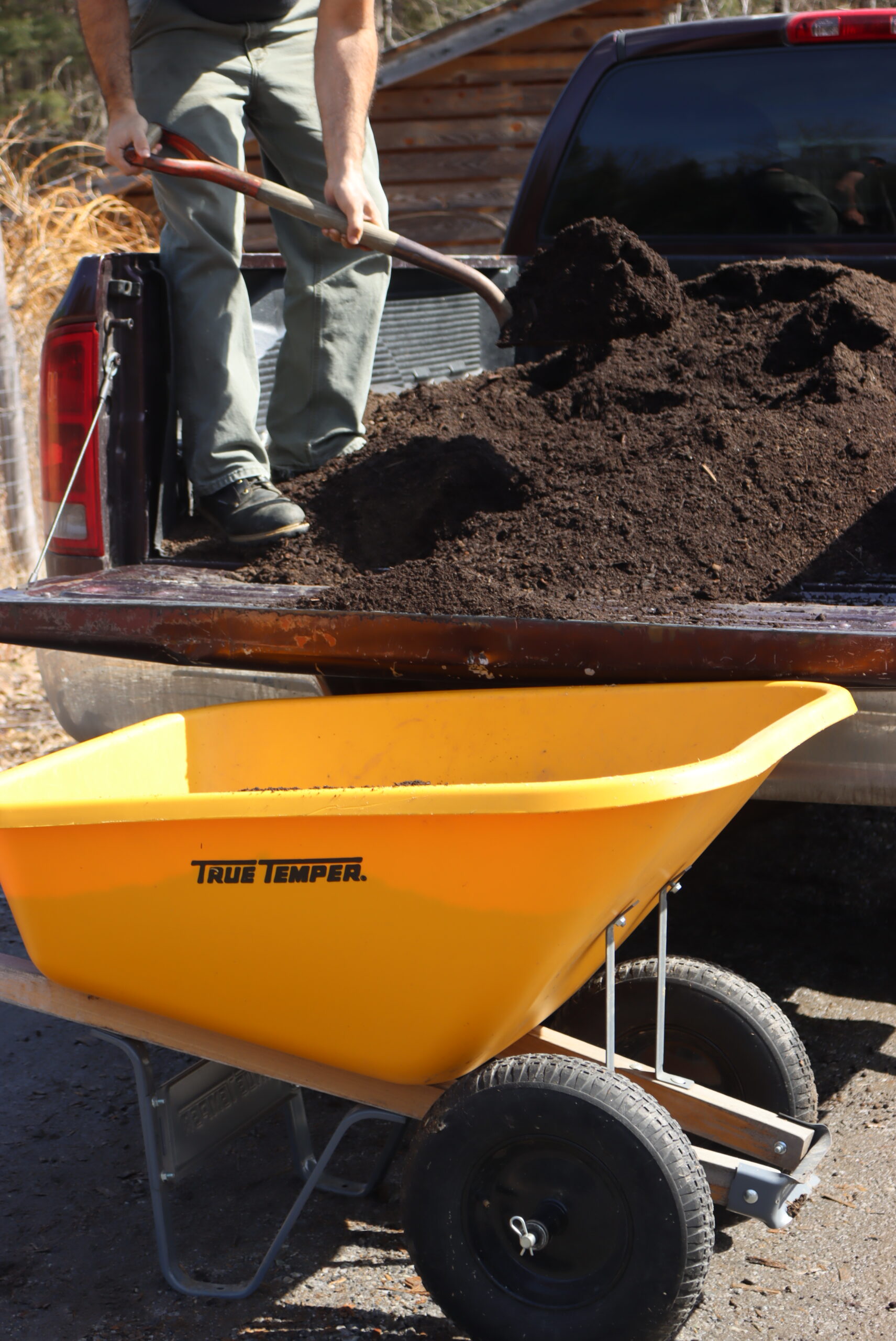
It’s no surprise that countertop composters have surged in popularity in recent years as more people look for efficient, eco-friendly ways to manage kitchen waste. These appliances promise a fast, convenient way to turn food scraps into nutrient-rich material that can be used on houseplants, in gardens, or simply tipped out under a tree or in a grassy spot in the city.
While the idea of having compost in a matter of hours is appealing, it raises important questions: How do these appliances work? Is the process truly composting, or is it something else? How do they break down organic material so quickly?
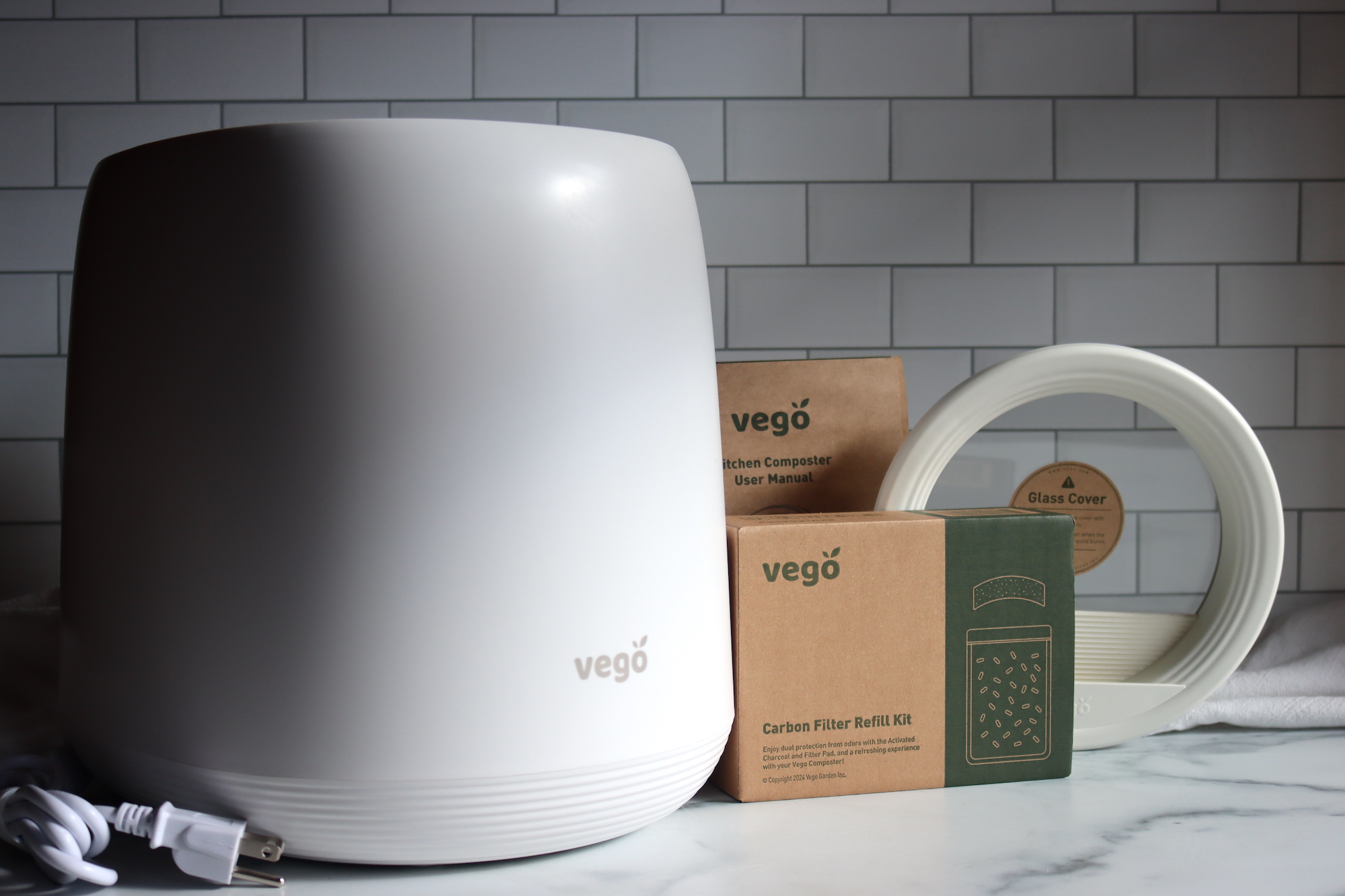
Vego Composters was kind enough to send me one of their composters for testing, and I put the machine through its paces to find out how it holds up to daily use. Thus far, here’s what I love about it:
- Quiet – It’s completely silent. The machine runs with less noise than the hum of an average refrigerator.
- Fast – The scraps are completely broken down in about 22 to 24 hours.
- No Smell – The container is sealed, so it has no smell before, during, or after the cycle. Before the cycle, that’s a big bonus, as I usually just use a regular compost bucket, and it can be smelly if it’s not taken out daily. The lid lets you keep things capped up and clean until you’re ready to run the cycle.
- Partial Cycles -The composter has faster cycles, that run in as little as 8 hours, which gives you something that’s perfectly fine for tossing into a regular compost pile or under a tree outside. We have a regular compost pile, but raccoons, possums, and skunks are common visitors. With a fast cycle, there’s nothing to attract wildlife, but I can still compost it the rest of the way in my traditional compost pile.
For someone who lives in an apartment or urban area, it’s easy to see how useful a countertop composter would be in dealing with compostables. For us out here on a homestead with a standard compost pile, it’s still really handy, as it speeds up the composting process and lets me put partially composted material that won’t attract critters into our bulk compost bin. It’s silent, and the short cycle is only 8 hours, so I can run it each night when we go to bed and take out the organic matter in the morning.
Even out here in a rural area, it’s really handy.
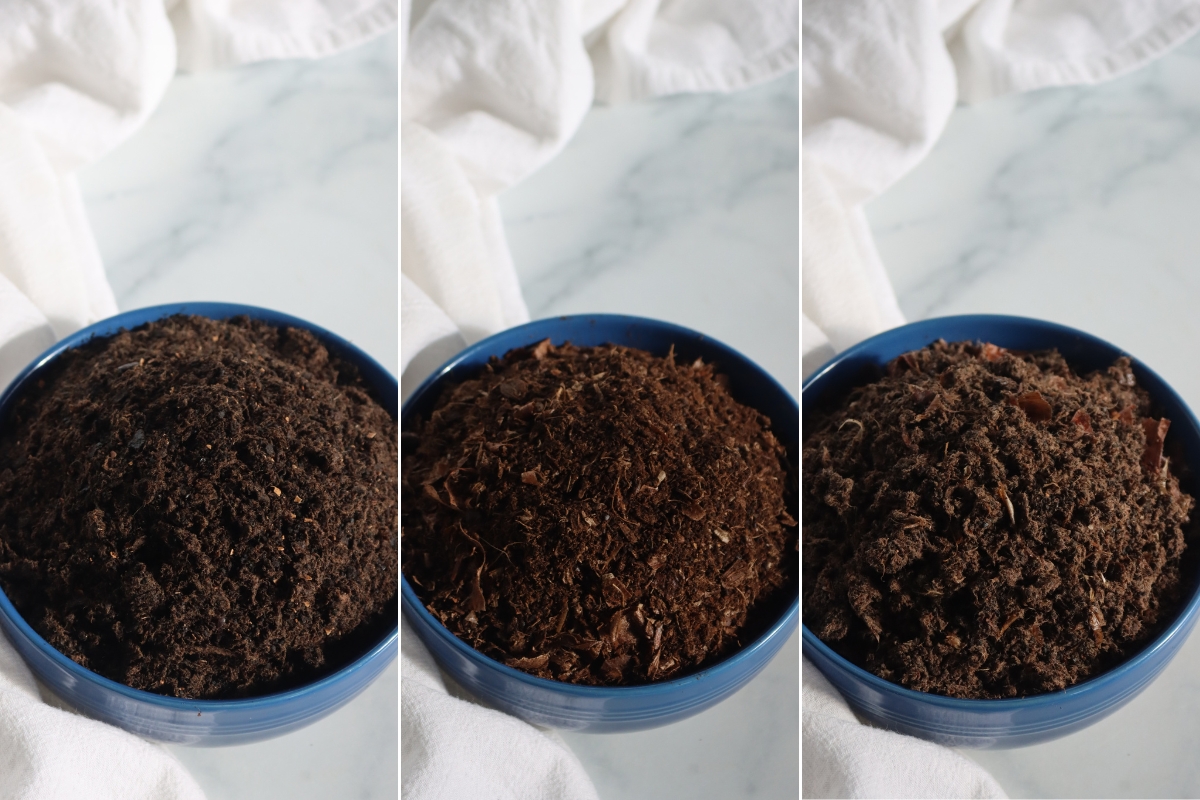
What is Countertop Composting?
Countertop composting refers to small, typically electric, appliances designed to help homeowners break down kitchen waste (primarily food scraps) quickly. These devices promise to transform everyday kitchen waste like fruit and vegetable scraps, coffee grounds, and eggshells into a compost-like material that can be reused in gardening or other applications. The major draw of these countertop composters is their speed — most of these devices claim to reduce waste into a usable form in as little as a few hours to a day, depending on the model.
While this sounds like an ideal solution for urban dwellers or anyone who doesn’t have the space or time for traditional composting, it’s important to understand that these appliances work very differently from traditional compost bins or piles.
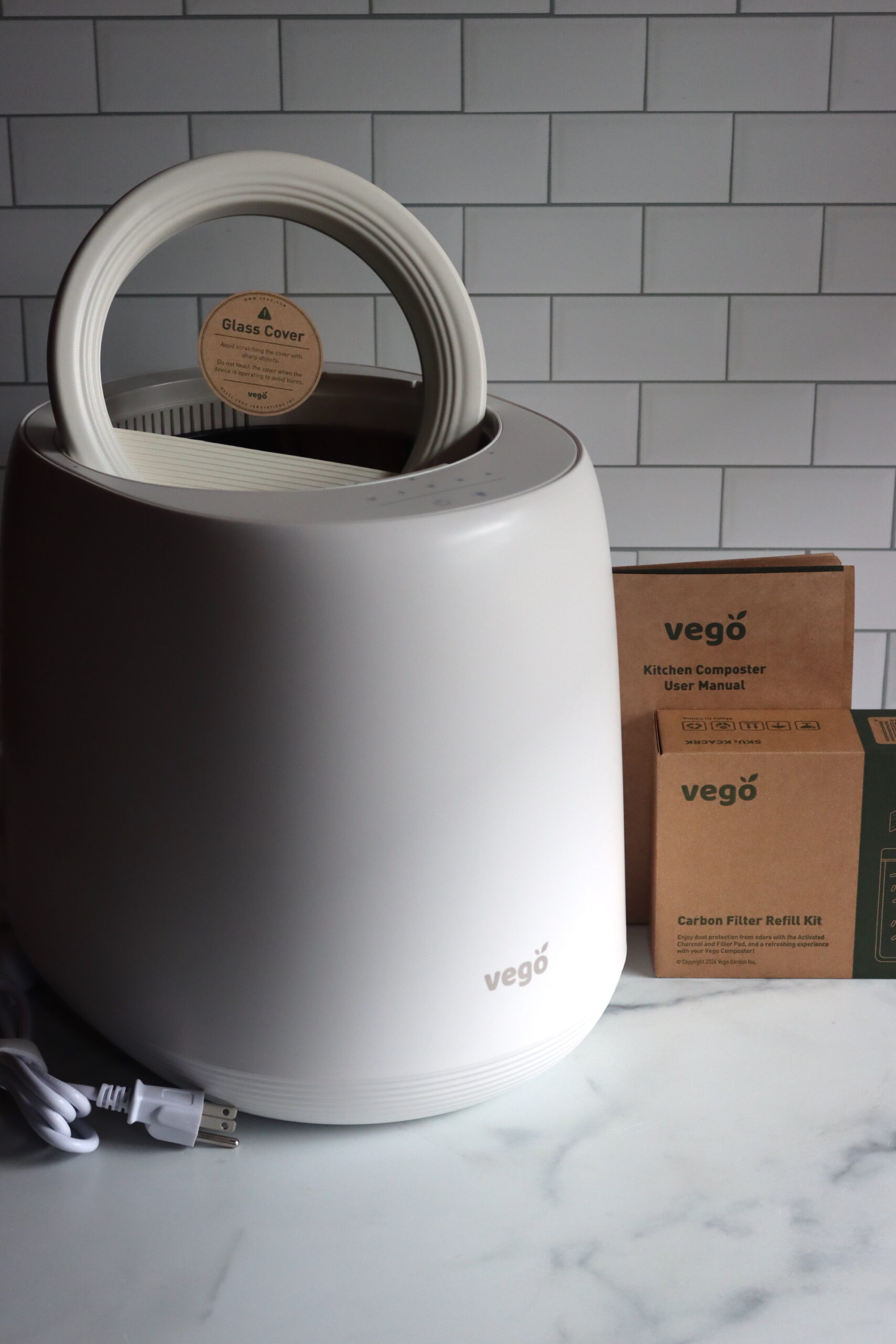
What’s the Difference Between Countertop Composters and Traditional Compost Piles?
They are breaking the food scraps down into nutrients, but they’re doing it without the microbial processes that are the main driving force in a traditional compost pile. Compost microbes need time, at least weeks, and they can also be smelly and a prime breeding ground for flies and other insects.
For those reasons, traditional composting is best done outside, but countertop composting works really well indoors in a contained environment and still turns food scraps into high-quality plant food.
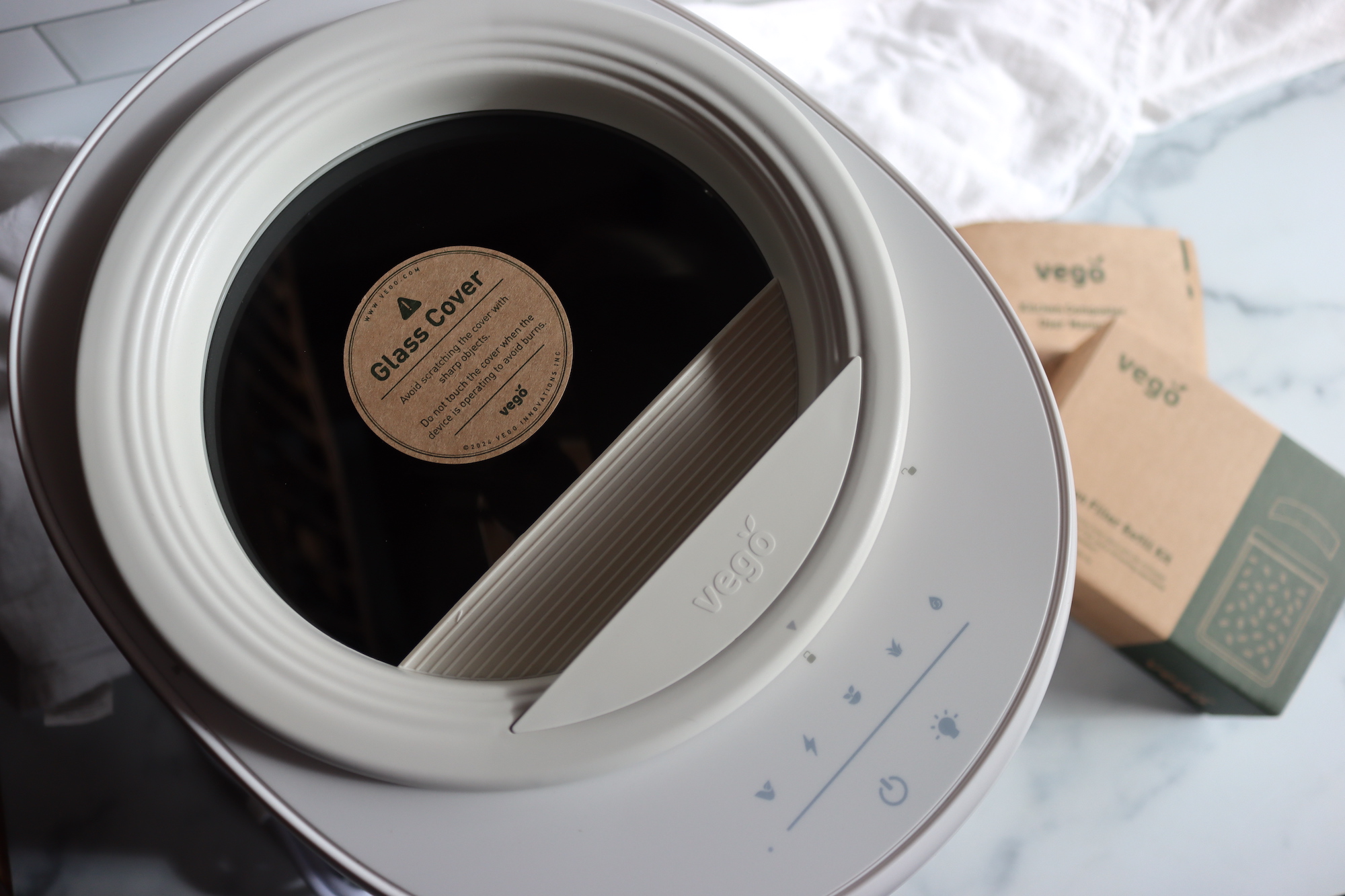
Types of Countertop Composters
There are three main brands of countertop composters on the market today, including Vego Composters, Vitamix Food Cyclers, and Lomi Composters. They all work in a similar way, but have different capacities and cycle times.
How Do Countertop Composters Work?
Countertop composters are designed to speed up the decomposition process by using a combination of heat, mechanical action, and sometimes microbial activity. Each brand and model operates slightly differently, but most share some key elements.
Heat: The Driving Force of Decomposition
A major component of most countertop composters is heat, which accelerates the breakdown of organic materials. In traditional composting, microorganisms like bacteria and fungi break down food scraps over weeks or months in a process that naturally generates heat. However, countertop composters use electric heating elements to artificially raise the temperature inside the machine, typically between 120°F to 160°F (49°C to 71°C), which mimics the temperature range of active composting.
The primary purpose of the heat is to dehydrate and sterilize the organic material. While some models use this heat to support enzymatic activity, others simply use it to kill off any potential microbes. By rapidly increasing the temperature, countertop composters speed up the breakdown of organic material, reducing it to a nutrient-dense, dry residue much faster than traditional composting.
Mechanical Grinding and Shredding
Most countertop composters also include mechanical grinders or shredders, which help break down the food scraps into smaller pieces. The smaller the particles, the more surface area is exposed to heat and other decomposition processes, which in turn speeds up the overall breakdown.
By breaking the material into smaller pieces, the composter reduces the need for regular turning or mixing, which is a common requirement in traditional composting. Some composters may even combine this grinding action with heat, so the materials are shredded and dried simultaneously.
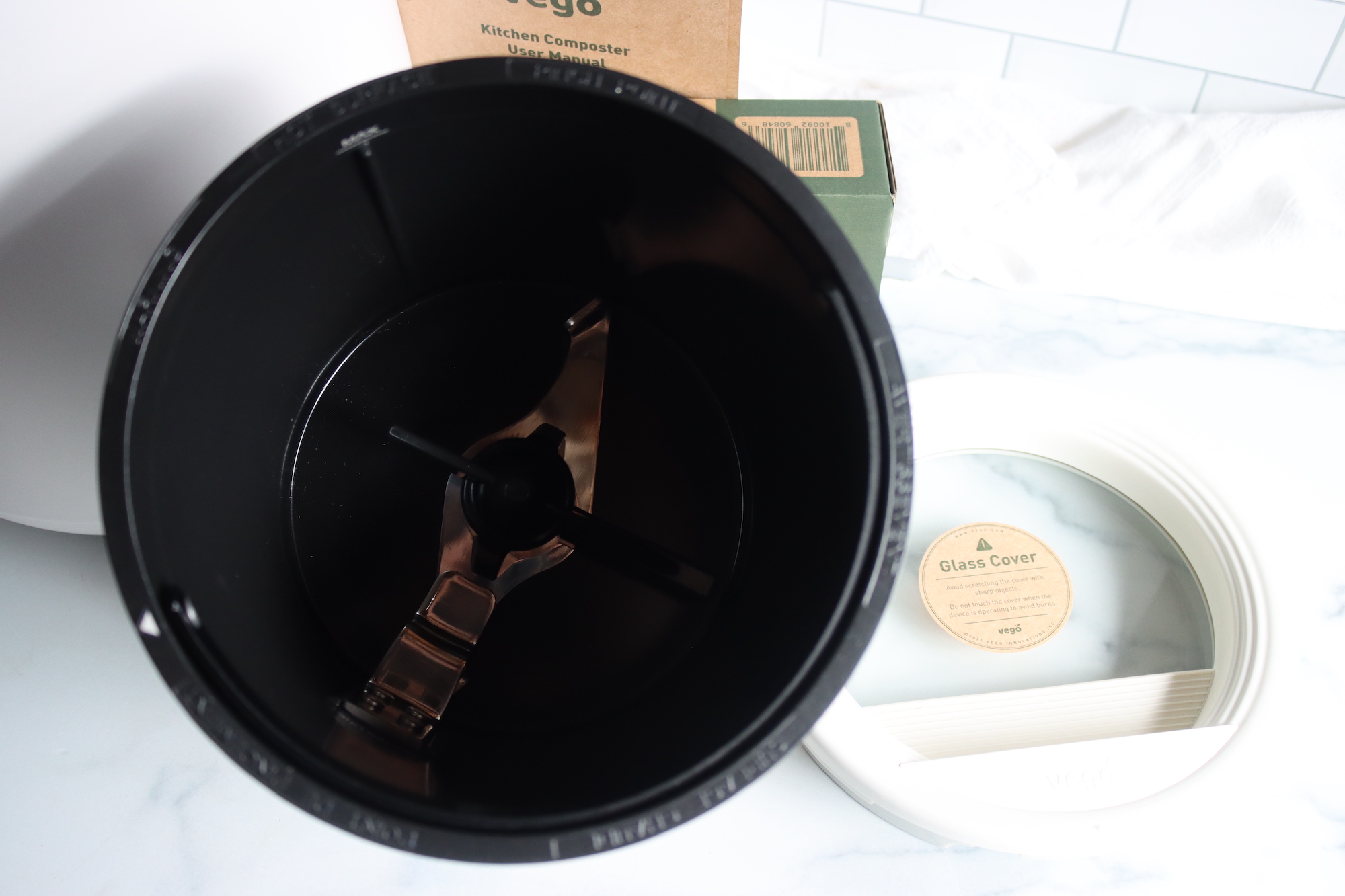
Enzymatic Digestion and Dehydration
While some countertop composters rely primarily on heat, others also employ enzymatic digestion. Enzymes are natural proteins that help break down complex molecules into simpler ones. In some models, enzymes are added to assist in the breakdown of organic materials like proteins, fats, and carbohydrates. This process may occur at a higher temperature to ensure the enzymes work effectively, further accelerating the decomposition process.
Composters usually come with a starter pack of enzyme tabs to help scraps break down. I tried the cycle both with and without the tabs, and honestly, I didn’t notice much of a difference. Both times everything was fully broken down, which is good news…no need to keep buying consumables after you get your unit unless you notice that your particular mix of scraps aren’t fully breaking down.
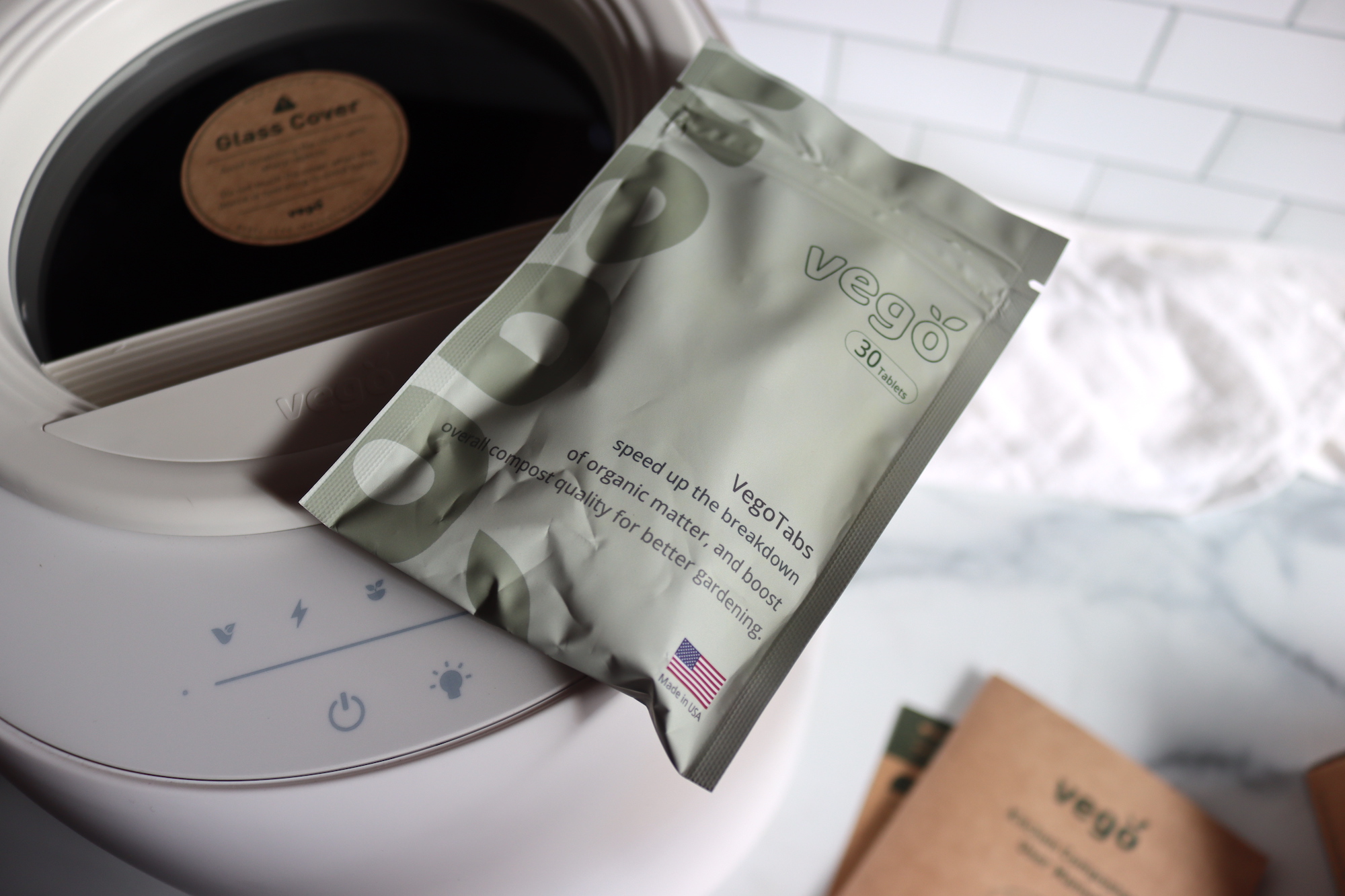
Microbial Action vrs. Enzymatic Action
Traditional composting relies heavily on the work of microorganisms like bacteria and fungi. These microbes break down organic matter in a process that is slow but steady. However, in most countertop composters, the role of microbes is limited or suppressed. The high heat inside the machine can kill off any microorganisms that would typically participate in the breakdown of the material.
Some composters add in enzymes that help break down carbohydrates, fats, and proteins, and those enzymes can be highly effective at converting food scraps into nutrients for plants. (The enzymes exist in nature and naturally promote decay in plant material; you’re just adding more of them.).
Dehydration
Another important aspect of this process is dehydration. As heat and sometimes enzymes break down the food scraps, the moisture is removed, resulting in a dry, crumbly material. The removal of moisture is crucial because it helps preserve the material and prevents it from becoming a breeding ground for bacteria or mold.
The end result is a material that is more sterile and dehydrated than traditionally composted organic matter, but it’s just as broken down and nutrient-dense.
Using Your Countertop Compost
After the process is complete, the composter produces a finished product that is often in the form of a dark, crumbly compost or a dry, nutrient-dense soil amendment. Most models produce compost-like material in about 24 hours, and some have “quick” cycles that just start the breakdown in 2 to 8 hours, allowing you to pour the output onto your grass or a traditional compost pile.
The resulting compost is typically odor-free, and it’s ready to be used in your garden or plants to improve soil health.
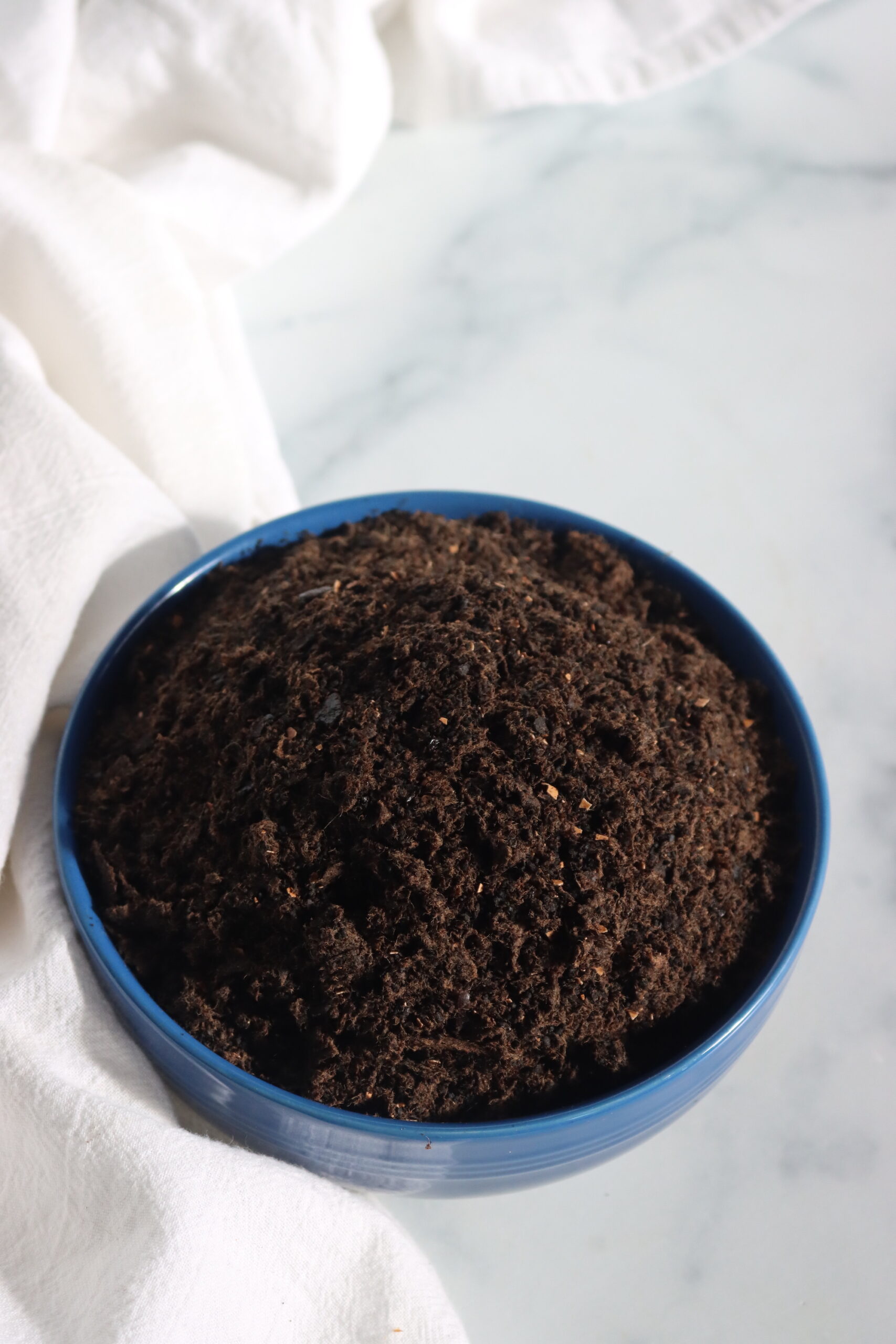
Cleaning and Maintenence
Once the composting cycle is complete, you typically need to empty the bin and clean it. Most countertop composters are designed to be easy to clean, with removable bins or trays that can be wiped down or rinsed. You should also check for any food residue or buildup in the grinder or heating elements that might need occasional maintenance.
Many of the models have a “clean” cycle that self cleans the unit, all you have to do is add water. With the vego model, the clean cycle runs in 30 minutes.
The carbon filter on the back keeps things smelling clean, and they recommend replacing it every 3 to 4 months.
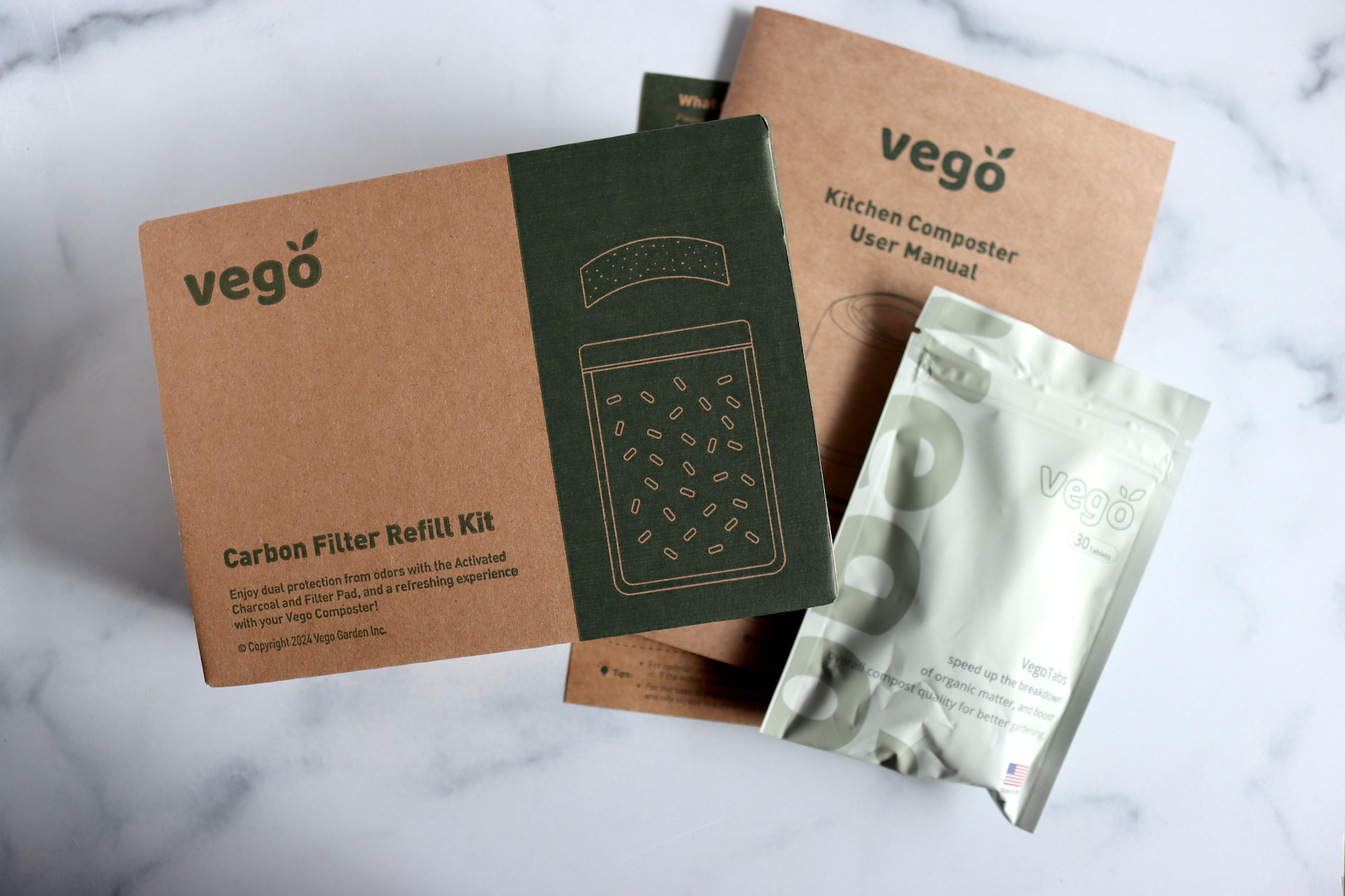
Is This Really “Composting”?
So, the big question is: Is countertop composting actually composting? The answer depends on how you define “composting.”
In the traditional sense, composting refers to the process by which organic matter is broken down by microorganisms (bacteria, fungi, and other decomposers) into a dark, nutrient-rich, crumbly material. This process typically requires moisture, oxygen, and time, and it can take anywhere from a few weeks to several months, depending on environmental factors like temperature and moisture levels.
In contrast, countertop composting uses heat, mechanical grinding, and sometimes enzymatic digestion to break down the material rapidly. While some models incorporate elements of enzymatic activity, the process is not driven by biological decomposition in the traditional sense. Instead, these appliances rely on physical and thermal methods to achieve a similar outcome — a dry, nutrient-rich material that’s rich in organic matter and nutrients for plants.
Traditional or Countertop Composting: Which is Better?
Ultimately, whether countertop composting or traditional composting is better depends on your space, time, and goals.
- If you’re looking for speed, convenience, and odor control, and you don’t mind spending a little extra on electricity or upfront costs, then a countertop composter might be the best option for you.
- However, if you have the space, time, and desire to produce a high-quality, nutrient-rich compost for gardening, and you’re willing to put in the effort, traditional composting is likely the better choice.
Both methods have their pros and cons, and understanding these trade-offs can help you make an informed decision based on your composting needs and lifestyle.
Countertop composting appliances are a great tool for individuals who need a fast and convenient way to manage food scraps, especially in urban environments where space for traditional composting may be limited. While the process doesn’t rely on the biological mechanisms of traditional composting, it still produces a usable, nutrient-rich end product.
For those who want to manage their kitchen waste in a sustainable way but don’t have the time or space for traditional composting, countertop composting offers an efficient alternative.
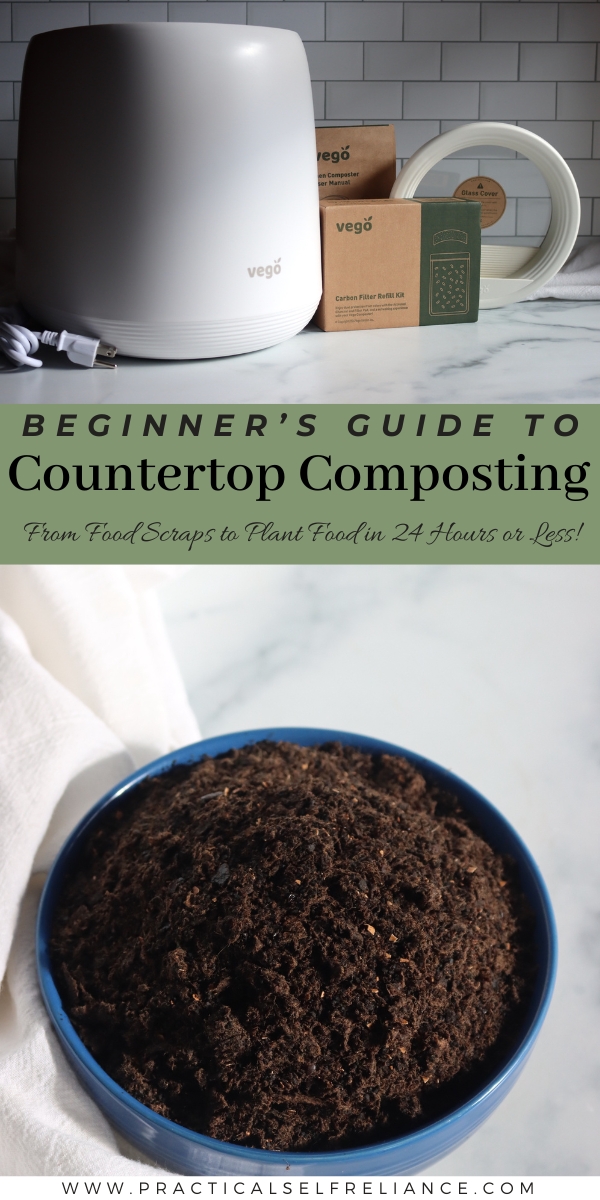
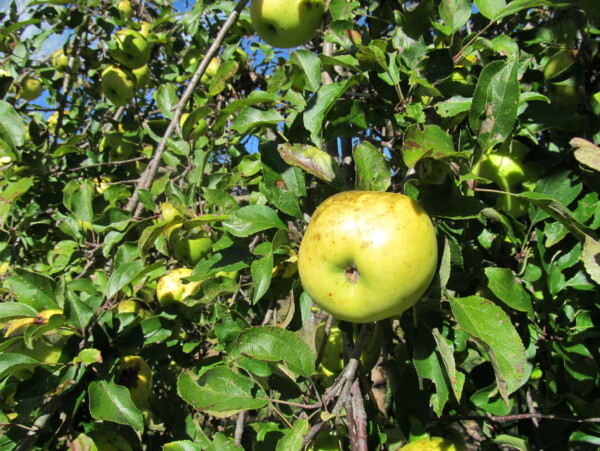



Did you experiment with processing meat or dairy? I don’t currently compost those things in my backyard compost in Burlington. Thanks!
You can definitely do this. The biggest difference when using meat or other animal byproducts is to be sure to cover the pile with more carbon rich materials once you’re done building the pile. This will help tremendously with the smell. You of course also want to be sure that you are using the correct ratio of greens and browns and be sure that your pile gets to the correct temperature before turning.
Would canned water last longer than water kept in plastic jugs? And how long?
It does! There’s more on that in this post on canning water: https://practicalselfreliance.com/canning-water/
Thank you for the detailed review. This was a super interesting post, especially for me as an urban dweller!